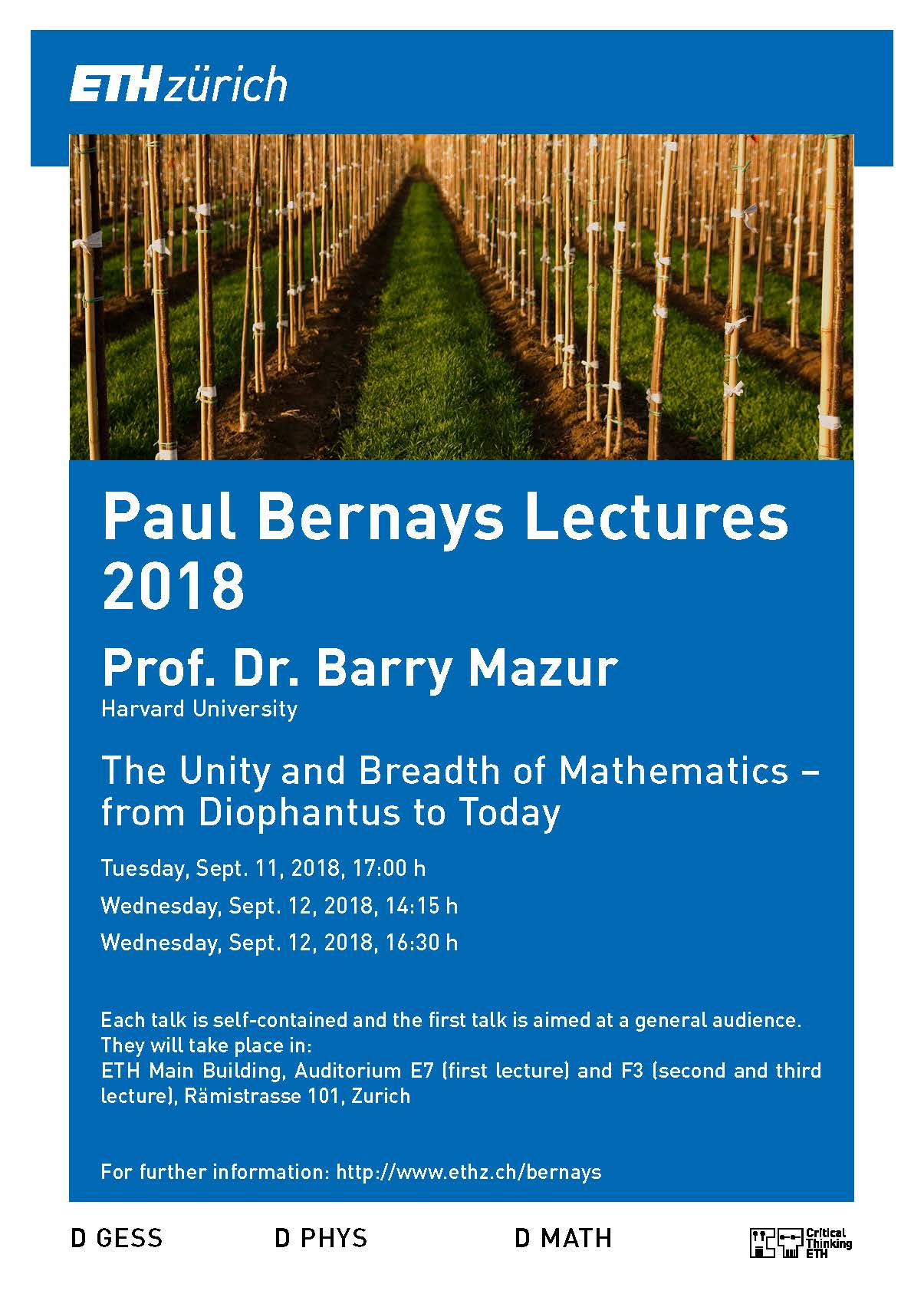Paul Bernays Lectures 2018
The 2018 Paul Bernays Lectures on the topic "The unity and breadth of mathematics – from Diophantus to today" were delivered by Professor Barry Mazur.
Barry Mazur, Harvard University, USA
Barry Mazur is the Gerhard Gade University Professor at Harvard University. His early interests were in topology, and subjects closely related to topology. From there he moved to algebraic geometry and number theory, subjects in which he is currently working. He often teaches courses related to his other interests, particularly in philosophy and history of mathematics.
Portrait on ETH News: What unifies mathematics
Video recordings
The recordings of all lectures are available on the ETH video portal.
The unity and breadth of mathematics – from Diophantus to today
Lecture 1: What is it that unifies mathematics?
Tuesday, 11 September 2018, 5.00 p.m.
Abstract
Is mathematics unified? Does it matter? And are there useful ways to think about these questions? Geometry as algebra and lgebra as geometry – these metaphors have been with us since ancient times and and the sheer wonder has never faded. Nowadays, mathematicians are attempting to join great mathematical fields – each with their own distinct brand of intuition – into grand syntheses enjoying intuitive power not matched by any single field alone. The Langlands Programme is one on-going example of this. Model theory offers a majestic and unified overview of the fundamental syntax we use. Powerful computing is now at the heart of many theoretical pursuits. There is a resurgence of interest in what is called arithmetic statistics (which I will describe). And the range of our applications is expanding. I will give an overview of these issues and the questions they raise.
Lecture 2: New issues, and expectations, in the study of rational points
Wednesday, 12 September 2018, 2.15 p.m.
Abstract
Since Diophantus the question of rational solutions to polynomial equations has gripped the imagination of mathematicians, and yet we are – now in 2018 – still attempting to understand the general lay of the land. There are questions we confront for which we still don’t have the experience to conjecture their answer, let alone answer them. I will give an overview of this, as well as recent work on arithmetic statistics – i.e., the study of specific, or general families of curves or abelian varieties in terms of the statistical behavior of their Diophantine properties. This is largely due to Manjul Bhargava and his co-authors. I will discuss how this connects with, and sharpens, our more general expectations.
Lecture 3: Diophantine stability and the vanishing of L-functions at the central points
Wednesday, 12 September 2018, 4.30 p.m.
Abstract
A curve, X, over a number field K is Diophantine Stable for the extension L/K if X acquires no 'new' rational points when one makes the base change from K to L; i.e., if X(L) = X(K). How 'frequently' does this happen? I will discuss joint work with Karl Rubin regarding the statistics related to Dirichlet L-functions and L-functions of elliptic curves and abelian varieties, and our results on Diophantine stability.


